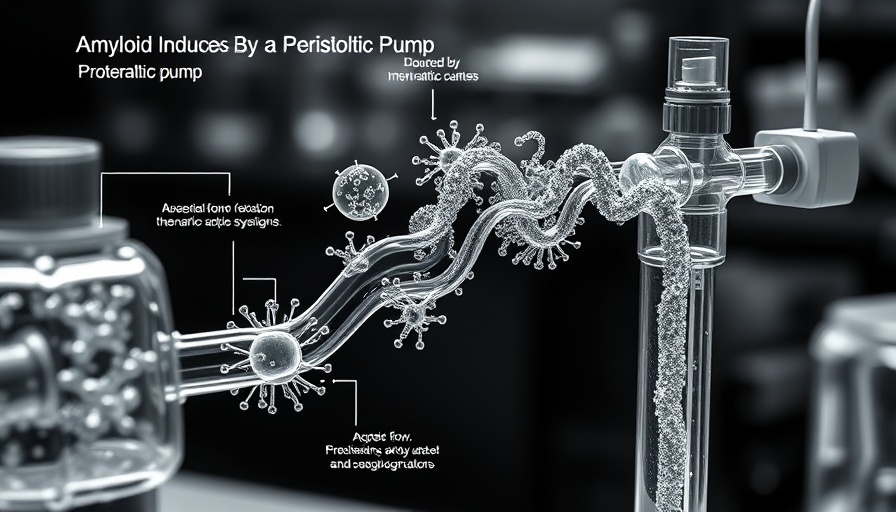
Understanding the Link Between Peristaltic Pump Flow and Amyloid Formation
Recent research has uncovered a fascinating connection between fluid dynamics and protein aggregation—specifically, how peristaltic pump flow can induce amyloid formation. This mechanism raises crucial implications for understanding amyloid-related diseases such as Alzheimer's and Parkinson's, which have become an increasing concern in our aging population.
At Osaka University, scientists investigated how the mechanical action of peristaltic pumps, commonly used in medical procedures like dialysis, might facilitate the conditions for amyloidosis. The study, recently published in npj Biosensing, found that high shear flow forces generated during pump operation can mechanically break supersaturation conditions in fluids, triggering the aggregation of amyloidogenic proteins such as hen egg white lysozyme, alpha-synuclein, and beta-2 microglobulin.
Why Does This Matter?
Amyloidosis, characterized by misfolded protein aggregates, is linked to several devastating conditions. The presence of amyloid fibrils, which can clump together under certain conditions, disrupts normal bodily functions. Understanding the triggers that cause these proteins to aggregate could lead to breakthroughs in treatment and prevention.
The Mechanism of Amyloid Formation Through Peristaltic Flow
The research team's experiments highlighted how the intense shear stress exerted in a peristaltic pump system promotes the aggregation of normally soluble proteins. By modeling amyloid behavior through fluorescence detection as a protein moved through the pump, researchers found that mechanical agitation from the flow system facilitated nucleation—the initial step in amyloid formation. The findings suggest that certain medical devices, like dialysis machines that utilize peristaltic pumps, could inadvertently heighten the risk of amyloid-induced diseases.
Relevance to Clinical Practice and Future Implications
For professionals in biotech and healthcare, these insights underscore the importance of considering mechanical factors alongside biochemical ones in patient care. The risks posed by shear forces in devices like peristaltic pumps might necessitate the development of new technologies that mitigate these mechanical stresses. As the research shows, understanding the complex interplay between physical flow dynamics and protein aggregation could be key to enhancing device safety and efficacy.
Are There Other Factors at Play?
While the study shines a light on the effects of mechanical flow, it also opens the discussion about a multifactorial approach to amyloidosis. Factors such as concentration, temperature, and additional flow conditions could also significantly impact amyloid formation. Continuous exploration into these areas will be vital for fully elucidating the mechanisms at work and for guiding future technological innovations in health care.
Conclusion: A Call for Awareness and Further Research
For business professionals in healthcare and biotech, this research is particularly pertinent. The implications of peristaltic pump-induced amyloid formation haven’t just clinical ramifications but also market applications as companies innovate around safer medical technologies. Continuous investigation into the nexus of mechanical forces and biochemistry is imperative.
Understanding how shear flow and other dynamics contribute to amyloid formation is crucial, especially in devising treatment strategies for at-risk patient populations. As we advance in both biomedicine and technology, professionals should stay informed about research developments in these areas to ensure both efficacy and safety in medical practice.
 Add Row
Add Row  Add
Add 




 Add Row
Add Row  Add
Add 

Write A Comment